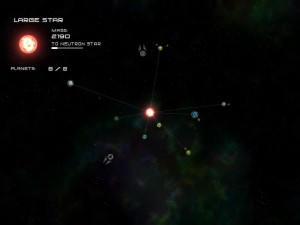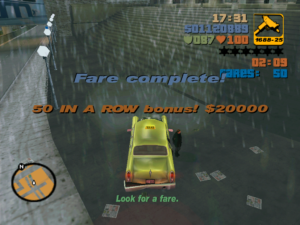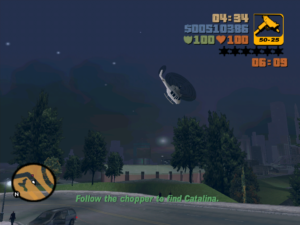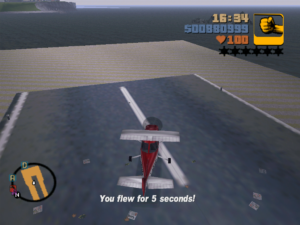Vice City: Money
Vice City‘s plot is about money. The fact that I can even say this is illustrative of the difference between this game and its predecessors: the first two GTAs didn’t have any real plot to speak of, while GTA3 had some kind of revenge premise that only made a difference in the beginning and the end, by which point I had forgotten about it. But this time around, the protagonist has spoken lines, and a fairly large proportion of those lines are “What about the money?”, so it’s harder to forget. The premise is a drug deal gone wrong. A suitcase full of large bills, belonging to Tommy’s boss Forelli, is in the hands of persons unknown, and all your main-arc missions, however generic they may be, indirectly serve the purpose of tracking it down.
Pursuit of money has always been a big part of the series, of course. But previously, it was mostly a matter of game mechanics. Your cash functions as your score. In the first two games, your primary goal on each level was simply to accumulate a certain quantity of money, which would unlock the next level. GTA3, in what I take to be a nod towards the earlier games, made you pay a $100000 fee to access the mission that got you off the first island — but for the first time in the series, it was diegetic, the money being paid to an NPC, ostensibly for the large quantity of explosives that the mission required.
Here in Vice City, there isn’t even a fee. Content is much less locked-away: you need to go through a certian set of missions to get off your initial island, just like in GTA3, but the entire city unlocks all at once. It’s probably more accurate to think of this as completing the tutorial missions. There’s still a strong pressure to keep on accumulating money, though, because there’s so much to buy with it now — in particular, safehouses.
A safehouse is a place where you can save your game, and most of them also have attached garages where you can stash vehicles safely. (Cars tend to disappear when you get too far away from them otherwise.) They’re strictly a convenience, but a safehouse close to the missions or rampages you’re attempting can greatly shorten the die-and-retry cycle. Still, it would be dishonest of me to claim that this is the reason I buy them. I buy them because they’re there. Because they’re available in greater quantities or higher prices than I can afford at any given moment, and that gives me something to strive for. It’s a way to make the ever-increasing cash rewards meaningful.
The suitcase full of cash? That’s cutscene money, in the same sense as cutscene deaths. Unconnected from the quotidian hundreds or thousands that pass through my hands. Getting it presumably means passing it on to Forelli, so it’s not like I’ll spend it. It would be kind of neat if a persistent player could simply do enough crime to pay back Forelli without finding the original, but the game cannily prevents us from making a serious attempt by simply never telling us how much money it is.
 Comments(0)
Comments(0)


